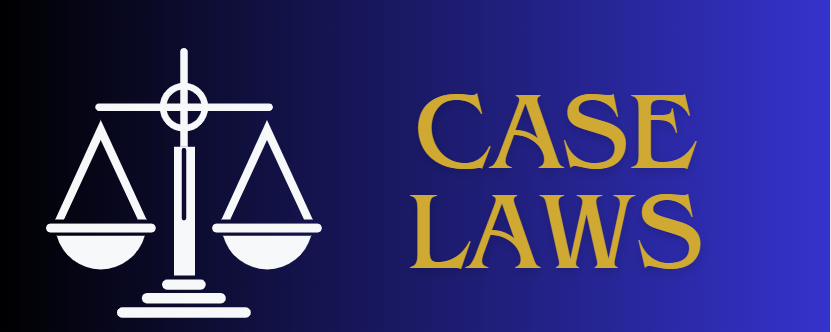CIRCUMSTANTIAL EVIDENCE.
---------------------------------
حالات کے ثبوت پر مبنی مقدمات کو درج ذیل ٹیسٹوں کو پورا کرنا چاہیے:
1. ان حالات کو مکمل طور پر قائم کیا جانا چاہیے جن سے جرم کا نتیجہ اخذ کیا جانا ہے ۔
2. اس طرح قائم کیے گئے حقائق صرف ملزم کے جرم کے مفروضے کے مطابق ہونے چاہئیں ، یعنی وہ کسی دوسرے مفروضے پر قابل وضاحت نہیں ہونے چاہئیں ، سوائے اس کے کہ ملزم مجرم ہے ۔
3. حالات فیصلہ کن نوعیت اور رجحان کے ہونے چاہئیں ۔
4. انہیں ثابت کیے جانے والے مفروضے کے علاوہ ہر ممکنہ مفروضے کو خارج کرنا چاہیے ، اور ۔
5. شواہد کا ایک سلسلہ ایسا ہونا چاہیے جو اتنا مکمل ہو کہ ملزم کی بے گناہی سے مطابقت رکھنے والے نتیجے کے لیے کوئی معقول بنیاد نہ چھوڑے ، اور یہ ظاہر کرنا چاہیے کہ ، تمام انسانی امکانات میں ، یہ عمل ملزم نے کیا ہوگا ۔
ایسے معاملات میں جہاں ثبوت حالات کی نوعیت کا ہو ، وہ حالات جن سے جرم کا نتیجہ اخذ کیا جانا ہے ، پہلی صورت میں ، مکمل طور پر قائم ہونا چاہیے ۔ ہر حقیقت کو انفرادی طور پر ثابت کیا جانا چاہیے ، اور اس کے بعد ہی عدالت کو تمام ثابت شدہ حقائق کے مجموعی مجموعی اثر پر غور کرنا چاہیے ، جن میں سے ہر ایک جرم کے نتیجے کو تقویت دیتا ہے ۔ اگر ایک ساتھ لیے گئے تمام حقائق کا مشترکہ اثر ملزم کے جرم کو قائم کرنے میں فیصلہ کن ہے ، تو سزا کا جواز پیش کیا جائے گا حالانکہ یہ ہو سکتا ہے کہ ان میں سے ایک یا زیادہ حقائق خود فیصلہ کن ہوں/نہ ہوں ۔ ثابت ہونے والے حالات ایسے ہونے چاہئیں کہ ہر مفروضے کو خارج کر دیا جائے سوائے اس کے جسے ثابت کرنے کی کوشش کی گئی ہو ۔ لیکن اس کا مطلب یہ نہیں ہے کہ صرف حالات کے ثبوت کے معاملے میں استغاثہ کا مقدمہ کامیاب ہونے سے پہلے ، اسے ملزم کی طرف سے تجویز کردہ ہر مفروضے کو خارج کرنا چاہیے ، چاہے وہ کتنا ہی فضول اور خیالی کیوں نہ ہو ۔ آخری ثبوت
--------------------- -
اب یہ طے ہو چکا ہے کہ آخری بار دیکھے جانے کا ثبوت وہ ہے جہاں دو افراد ایک ساتھ زندہ نظر آتے ہیں اور وقفے وقفے کے بعد ان میں سے ایک زندہ اور دوسرا مردہ پایا جاتا ہے ۔ اگر دونوں کے درمیان کی مدت مختصر ہے ، تو یہ اندازہ لگایا جا سکتا ہے کہ زندہ شخص وہی شخص ہے جس نے قتل کیا تھا ۔ دیکھنے اور واقعہ کے درمیان وقت کا فرق ایسا ہونا چاہیے کہ کسی اور کے جرم کا ارتکاب کرنے کے امکان کو مسترد کیا جا سکے ۔ متوفی کا ملزم کے ساتھ آخری بار دیکھا جانا خود اسے قتل کا مجرم ٹھہرانے کے لیے کافی نہیں ہے ۔ ملزم کو اس کے ساتھی کے قتل سے جوڑنے کے لیے کچھ ثبوت ضرور ہونے چاہئیں ، جیسے کہ بازیابی ، مضبوط مقصد ، اور آخری بار جب انہیں ایک ساتھ دیکھا گیا تھا اور اس وقت کے درمیان جب متوفی کو موت کے گھاٹ اتار دیا گیا تھا ۔ حالات کے ثبوت کے طور پر آخری بار دیکھا گیا ثبوت ملزم کی بے گناہی سے مطابقت نہیں رکھتا اور اسے بڑی احتیاط کے ساتھ قبول کیا جانا چاہیے ۔ اس کی باریکی سے جانچ کی جانی چاہیے تاکہ ملزم کے جرم کے علاوہ اس سے کوئی معقول نتیجہ اخذ نہ کیا جائے ۔
"آخری بار دیکھا گیا" نظریہ کی بنیاد امکان ، وجہ اور تعلق کے اصولوں پر مبنی ہے ، جس کے لیے ضروری ہے-(i) ٹھوس وجوہات کہ متوفی کو عام اور عام طور پر ملزم کے ساتھ ہونا چاہیے تھا (ii) جائے وقوعہ سے قربت (iii) نظر آنے اور جرم کے درمیان مختصر وقت (iv) تیسرے شخص کی مداخلت کا کوئی امکان نہیں (v) مقصد اور (vi) شکار کی موت کا وقت ۔
آخری بار دیکھے گئے نظریہ پر مبنی حالات کے ثبوت کے معاملے میں ، آخری بار دیکھے گئے نقطہ اور لاش کی دریافت کے درمیان وقت کا فرق اتنا چھوٹا ہونا چاہیے کہ کسی دوسرے شخص کے جرم کا مصنف ہونے کا امکان ناممکن ہو جاتا ہے ۔ اس کی عدم موجودگی میں ، اکیلے آخری بار دیکھنے کا نظریہ یقین کے لیے ناکافی ہے ۔ موجودہ معاملے میں ، آخری بار دیکھا گیا نظریہ دیگر حالات سے غیر مصدقہ ہے ۔ موت کا وقت حتمی طور پر اس مدت کے لیے مقرر نہیں کیا گیا ہے جب متوفی کو آخری بار ملزم کے ساتھ دیکھا گیا تھا ۔ انکشاف میں تاخیر اور ملزم کو قتل سے جوڑنے والے براہ راست شواہد کی عدم موجودگی استغاثہ کے مقدمے کو مزید کمزور کرتی ہے ۔ اس طرح شک کا فائدہ ملزم کو ملنا چاہیے ۔
ملزم کی مشترکہ نوک پر لاش کی بازیابی سے حکم شہادت 1984 کے آرٹیکل 40 کے تحت اس طرح کی بازیابی کی ثبوت کی قدر نمایاں طور پر کمزور ہو جاتی ہے ۔
Cases based on circumstantial evidence must satisfy the following tests:
1. The circumstances from which the conclusion of guilt is to be drawn should be fully established.
2. The facts so established should be consistent only with the hypothesis of the guilt of the accused, that is to say, they should not be explainable on any other hypothesis, except that the accused is guilty.
3. The circumstances should be of a conclusive nature and tendency.
4. They should exclude every possible hypothesis except one to be proved, and.
5. There must be a chain of evidence so complete as not to leave any reasonable ground for the conclusion consistent with the innocence of the accused, and must show that, in all human probability, the act must have been done by the accused.
In cases where evidence is of a circumstantial nature, the circumstances from which the conclusion of guilt is to be drawn should, in the first instance, be fully established. Each fact must be proved individually, and only thereafter, the Court should consider the total cumulative effect of all the proved facts, each one of which reinforces the conclusion of guilt. If the combined effect of all the facts taken together is conclusive in establishing the guilt of the accused, the conviction would be justified even though it may be that one or more of these facts, by itself/ themselves, is/ are not decisive. The circumstances proved should be such as to exclude every hypothesis except the one sought to be proved. But it does not mean that before the prosecution case succeeds in a case of circumstantial evidence, alone, it must exclude each and every hypothesis suggested by the accused, howsoever, extravagant and fanciful it might be.
LAST SEEN EVIDENCE
-----------------------------
It is by now settled that evidence of last seen is one where two persons are seen together alive and after an interval of time, one of them is found alive and the other dead. If the period between the two is short, a presumption can be drawn that the person alive is the person who committed the murder. The time gap between the sighting and occurrence should be such as to rule out the possibility of somebody else committing the offence. The circumstance of the deceased being last seen in the company of the accused is not by itself sufficient to hold him guilty of the murder. There must be some evidence to link the accused with the murder of his companion, such as incriminating facts as recovery, strong motive, and the time between when they were last seen together and the time when the deceased was done to death. Last seen evidence, as circumstantial evidence, must be incompatible with the innocence of the accused and should be accepted with great caution. It must be examined minutely so that no plausible conclusion should be drawn therefrom except the guilt of the accused.
The foundation of the “last seen” theory is based on the principles of probability, cause and connection, which requires-
(i) cogent reasons that deceased in normal and ordinary course was supposed to accompany the accused
(ii) proximity of the crime scene
(iii) short time between the sighting and crime
(iv) no possibility of third person interference
(v) motive and
(vi) time of death of victim.
In the case of circumstantial evidence based on the last seen theory, the time gap between the point of last seen and discovery of the dead body must be so small that the possibility of any other person being the author of the crime becomes impossible. In the absence of this, the theory of last seen alone is insufficient for conviction. In the present case, the last seen theory remains uncorroborated by other circumstances. The time of death is not conclusively fixed to the period immediately after the deceased was last seen with the accused. The delay in disclosure and absence of direct evidence connecting the accused to the murder further weaken the prosecution's case. As such, benefit of doubt must go to the accused.
Recovery of dead body on the joint pointation of the accused significantly weakens the evidentiary value of such recovery under Article 40 of the Qanun-e-Shahadat Order, 1984.
Crl.P.L.A.63-Q/2024
Osama v. The State





















0 Comments